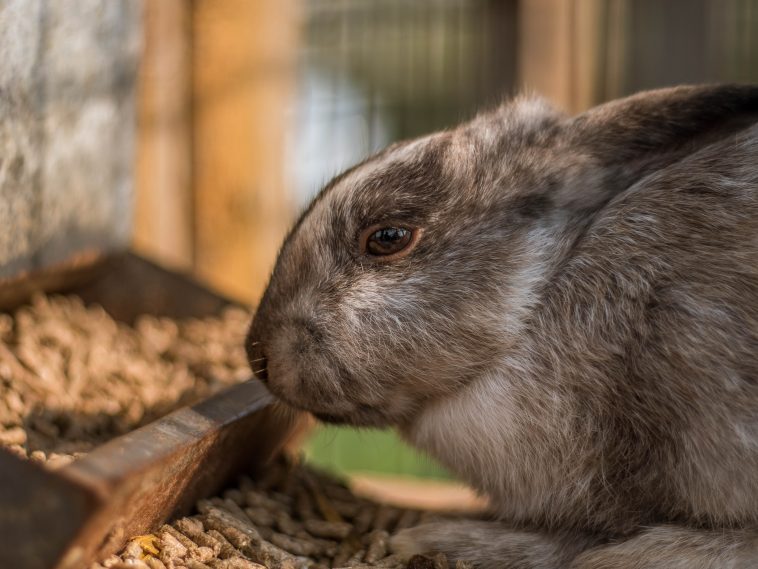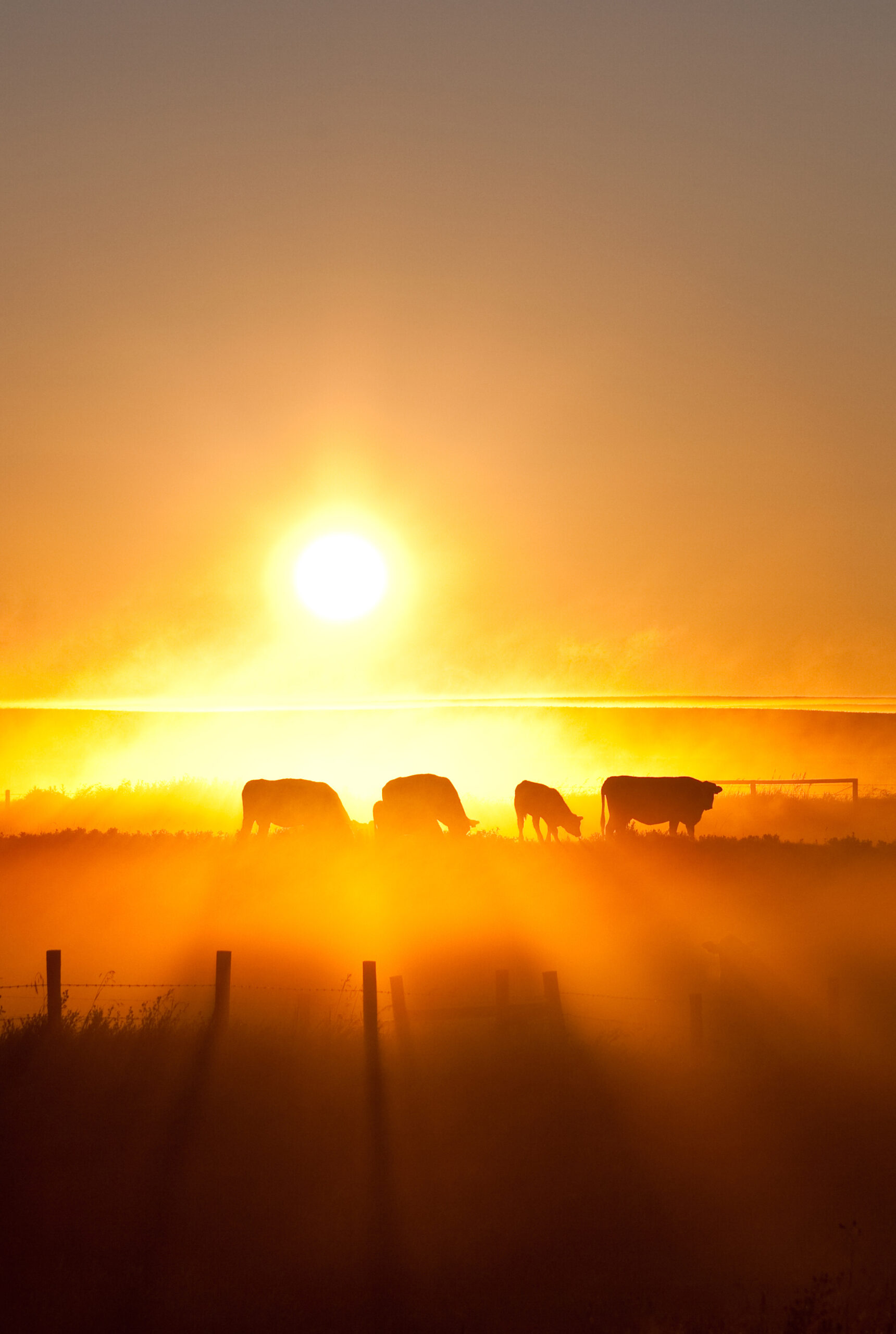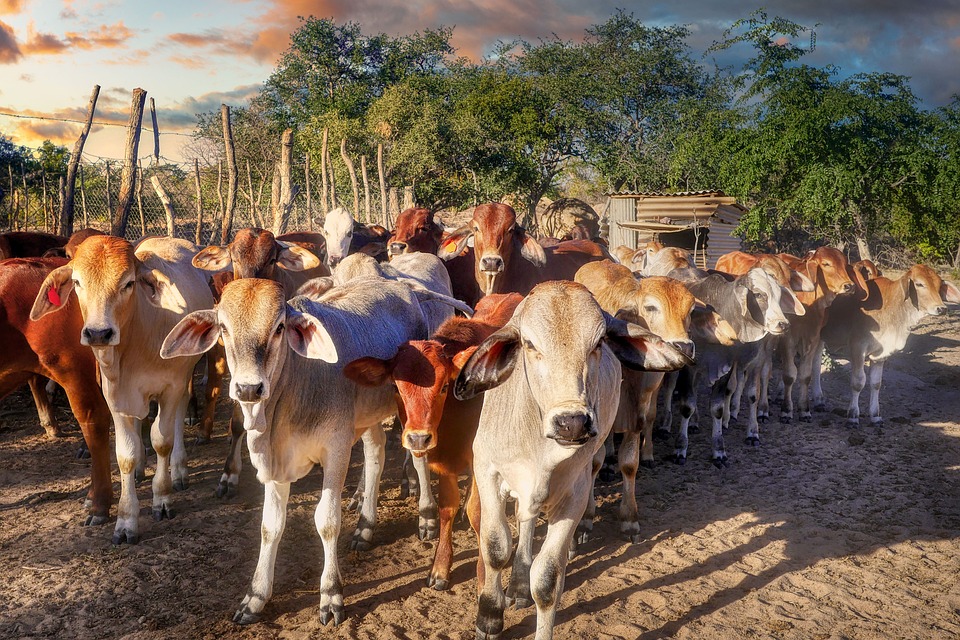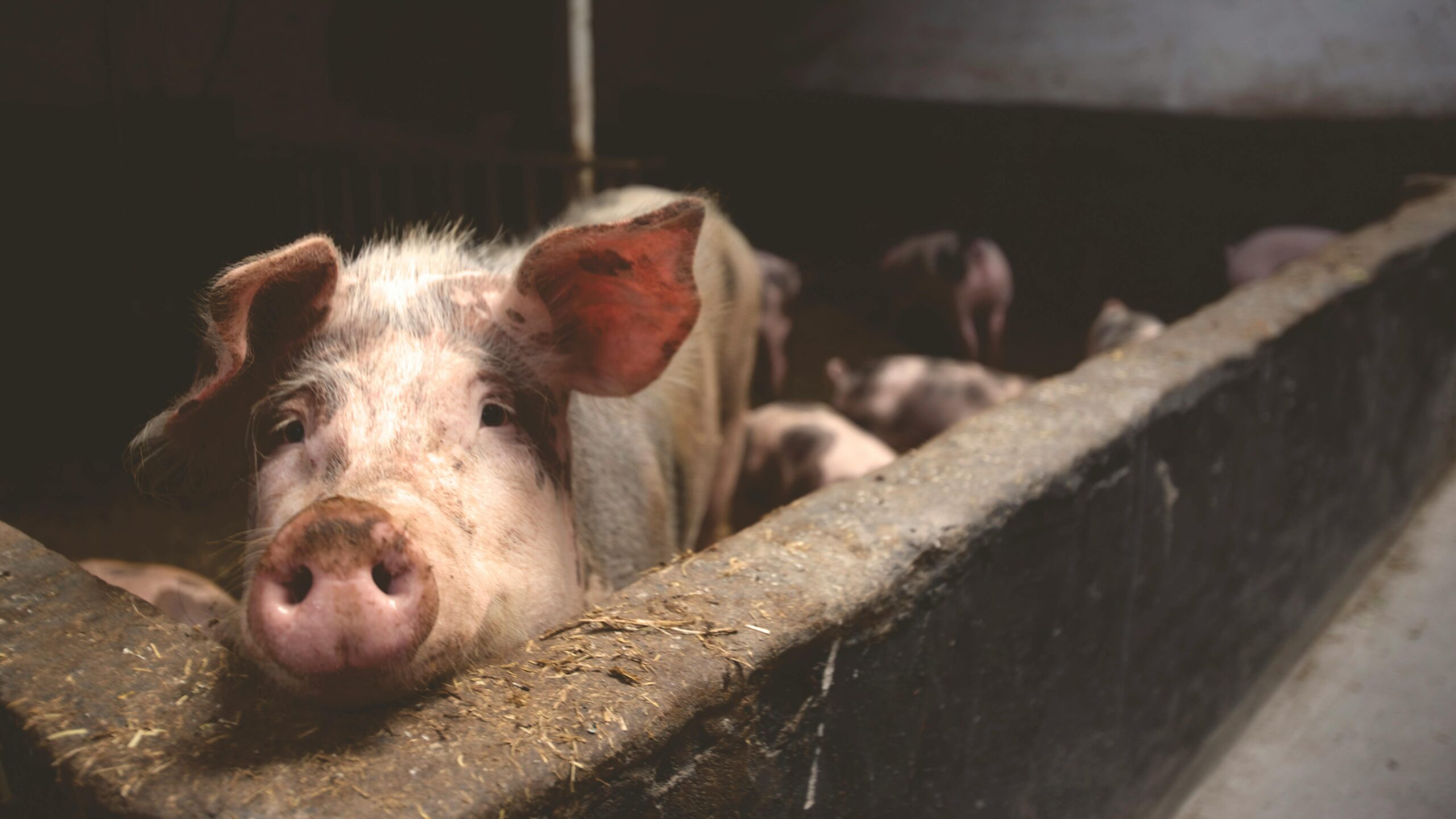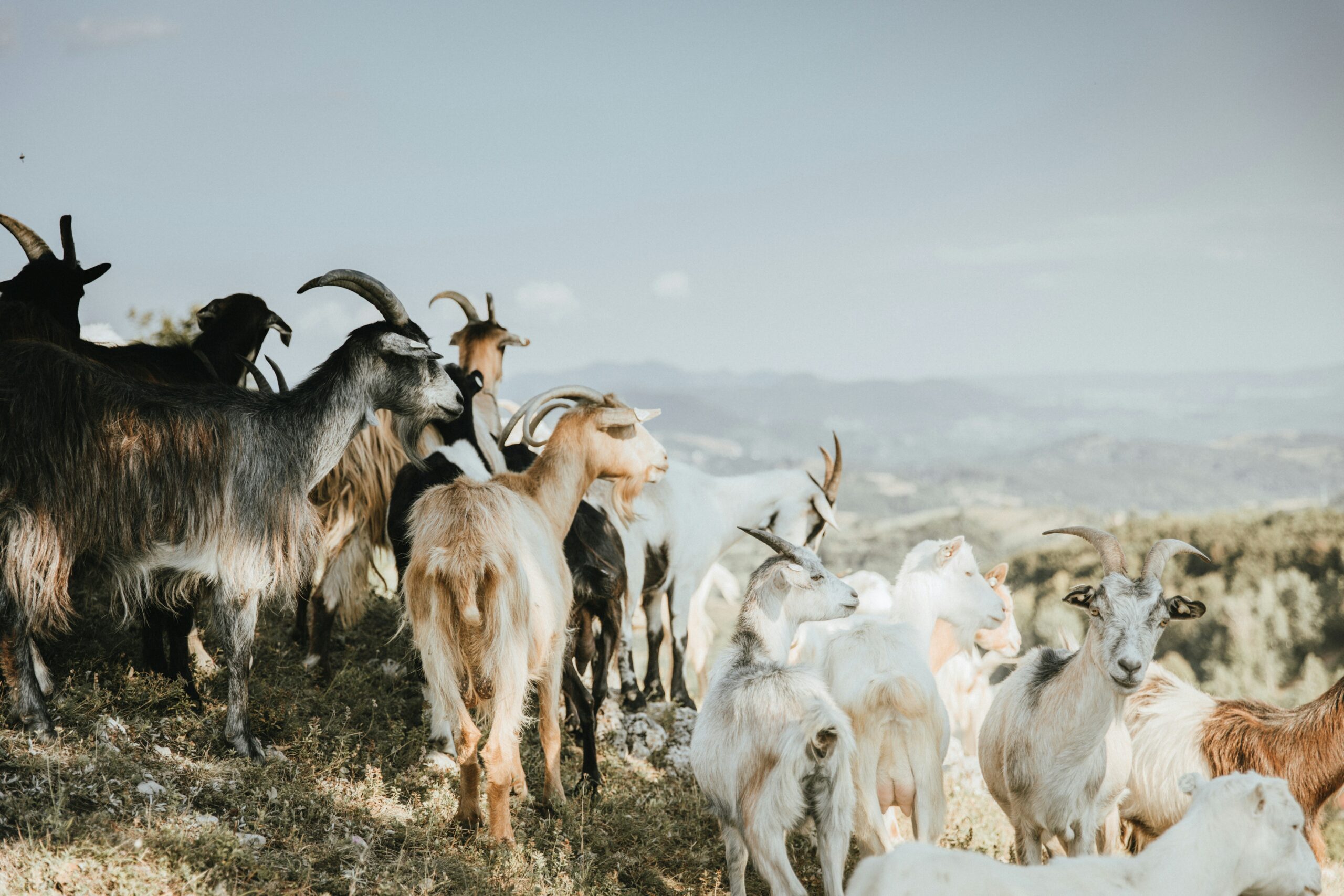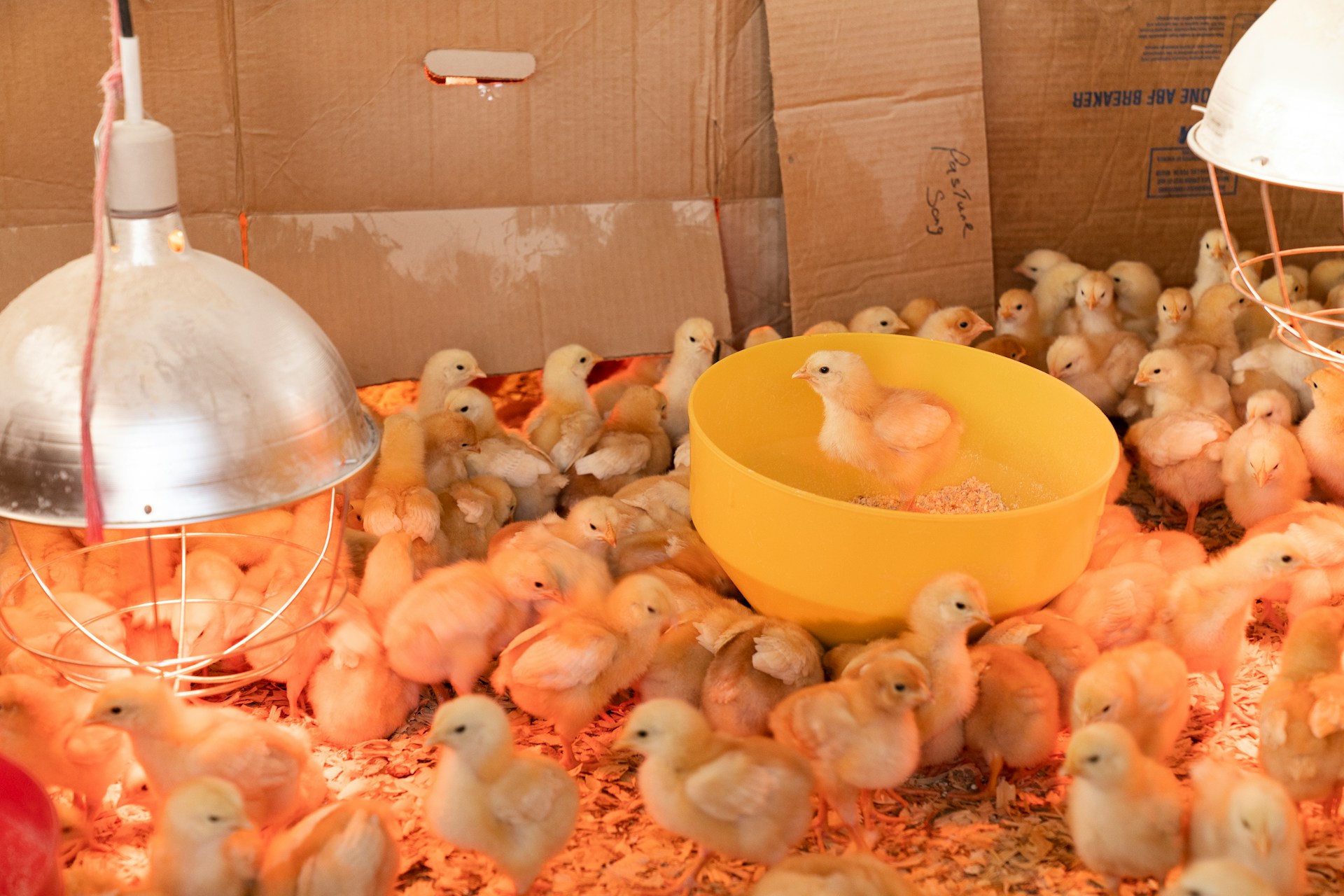There is no such thing as a one-size-fits-all approach to rabbit nutrition. In order to keep the rabbits healthy and prevent them from gaining too much weight, they must be fed the right quantity of food.
To feed rabbits, you need to remember that a rabbit has only one stomach, which makes them monogastric (non-ruminants). To develop properly, rabbits require specific nutrient ratios of proteins, energy, minerals, vitamins, and fats.
Each stage of a rabbit’s life has different nutritional requirements. The most concentrated and nutrient-dense foods are required during the lactation period of the doe. The doe produces milk that is three times as rich as cow’s milk, but they have few reserves compared to the demand placed on them.

Raising rabbits can be classified into the following production groups:
- Pregnant does
- Non-lactating does
- Lactating doe and peri-weaning kits
- Young rabbits (4 to 12 weeks)
- Bucks
As young rabbits grow older, their diet may become less enriched than those of pregnant or lactating does. Bucks don’t require a lot of food for maintenance.

Table 1. Specified feed chemical compositions for rabbits of various categories that are raised intensively. (Table source: Lebas et al, 1997)
Concentrate feed should be fed to the rabbits twice a day, in the morning and in the evening, for a total of 120 to 170 grammes of feed. The best time to feed rabbits greens is in the evening when they are most active. Adult rabbits can be fed up to 130 grammes of pellets each day in addition to their regular diet. Production costs can be cut by reducing the quantity of pellets in a feed mix.
Rabbits will eat almost anything that grows on the earth. A farmer can grow his own greens for their rabbits and give them those instead of store-bought. From the time rabbits are weaned, feed them at least a handful of hay every day. Allowing greens to wilt before giving it to them is the best way to get the most nutrition out of it.
Pellets are typically made from Alfalfa and have been treated with a mineral mixture, vitamins, and salt, as well as green fodder or hay. You can feed a small rabbit population in your garden with kitchen and vegetable waste, grass, tree leaves, and root crops.
A rabbit’s diet can include lucerne, grass, green maize leaves, carrots, turnips, cabbage (limited amount), and lettuce (not Iceberg lettuce). A lactating doe should not be fed cabbage, as it can reduce her milk supply, so it is best to avoid it altogether. They can also eat things like maize meal, porridge, bread, samp, weeds, and fruit tree leaves, as well as other grains and starchy foods. Soya bean and peanut meals, as well as grains like maize, wheat, and barley, are good sources of protein.
Commercial salt cakes or salt mixed into the feed can both be used to supplement the rabbit’s diet. Vitamin A can be found in root crops and hay, whereas vitamin B can be found in greens and roughage. The leaves of potatoes, tomatoes, and rhubarb are toxic to rabbits and should not be fed to them.

(Image by food-pyramid.org)
Nutritional standards fall into four categories. First, protein standards and composition (distribution of amino acids). Protein is required to build or rebuild rabbit bodies. The proportion of indigestible fibre provides the mild congestion required for efficient digestive function. The quantity of acid detergent fibre (ADF) or indigestible ADF can also be estimated.
Energy is secondly required to control body temperature and for general bodily functions.
Minerals and vitamins are the final two building blocks for the animal’s skeleton and enzymes that use energy to construct and rebuild bodily proteins.
Water should be given ad libitum and be readily available at all times, seven days a week, 24 hours a day. The availability of clean, safe drinking water should never be a problem. Leaving rabbits without water is never acceptable.
If the farmer prefers, he can buy commercial pelleted feed for his rabbits from a variety of vendors. Commercial pellets should be used with care to avoid aflatoxin contamination. In commercial rabbit feed, the nutritional value often varies in the way that follows: 13 to 18 percent of the diet is protein, while 8 to 13 percent is digestible energy and 8 to 18 percent is fibre. When using them, make sure to only use brand-new, contaminant-free pellets. Do not feed your rabbit any hay or pellets that have been exposed to mould.

(Image by reddoorshelter.org)
A breeding doe’s diet should contain a higher proportion of protein, around 18 percent. The doe’s feed should be cut in half the day before kindling (giving birth), and then increased from the third day to the seventh day in a gradual but steady manner. Always make sure that the doe and her kits are fed. Introduce wilted greens gradually during weaning in order to avoid diarrhoea in the kits. If you want to keep your rabbits happy and healthy, you must feed them a mixture of dry matter (forage) and concentrated feeds (if possible).
Faeces excreted by rabbits can be both soft and hard. Additionally, rabbits eat their own faeces in order to obtain their vitamins, which are abundant in the soft droppings. Rabbits are known as “coprophages” because they eat their own faeces. A novice rabbit farmer may be frightened to learn this because their wire-bottomed hutch arrangement will allow rabbit droppings to fall through the wire. In this case, rabbits will eat the caecotropes as these droppings exit the anus, so it’s not an issue.

(Photo by vets4pets.com)
As a final piece of advice, if you’re going to make changes to a rabbit’s diet, go slow. It is not recommended to make any major changes to a rabbit’s diet at any point. The introduction of a new type of feed should be spread out over a few days when a change is needed. Providing rabbits with food that has been overheated or pesticide-treated is a bad idea. Large amounts of lush greens can be lethal to animals accustomed to concentrated feed. Even minor, but potentially significant, alterations to a grain-based diet may cause digestive upsets in some rabbits. In order to avoid an abrupt change in diet, it is suggested that a combination of greens and commercial foods be provided.
The information provided in this article is credited to:
A Complete Handbook on Backyard and Commercial Rabbit Production. (2014). Available at: https://pclive.peacecorps.gov/pclive/index.php/pclive-resources/resourcelibrary/1281-r0041-complete-handbook-backyard-rabbit-production/file
The National Department of Agriculture in South Africa in cooperation with JA Erasmus at the Glen Agricultural Development Institute. For more information visit www.daff.gov.za or send an e-mail to DPP@nda.agric.za.
Nurturing the roots of change in rural Kenya in cooperation with Bonnie Ami Holt at the Mitahato Education and Development Fund. For more information visit www.mitahatoedf.com/ or contact them on +254-728-082887.
Dutta, P., Singh, R.K., Dhali, A. & Rajkhowa, C. (2009). BACKYARD RABBIT FARMING. ISBN 10.13140/RG.2.1.1742.5440/1. Available at: https://www.researchgate.net/publication/273886912
Lebas, F., Coudert, P., de Rochambeau, H. & Thébault, R. (1997). The rabbit – Husbandry, health, and production. ISBN 92-5-103441-9.
Available at: https://www.researchgate.net/publication/38977233_The_Rabbit_Husbandry_Health_and_Production

